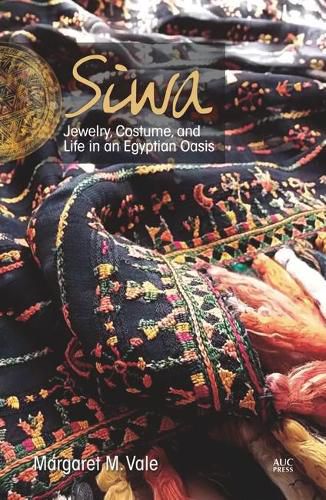Readings Newsletter
Become a Readings Member to make your shopping experience even easier.
Sign in or sign up for free!
You’re not far away from qualifying for FREE standard shipping within Australia
You’ve qualified for FREE standard shipping within Australia
The cart is loading…






Siwa is a remote oasis deep in the heart of the Egyptian desert near the border with Libya. Until an asphalt road was built to the Mediterranean coast in the 1980s, its only links to the outside world were by arduous camel tracks. As a result of this isolation, Siwa developed a unique culture manifested in its crafts of basketry, pottery, and embroidery and in its styles of costume and silverwork. The most visible and celebrated example of this was the silver jewelery that was worn by women in abundance at weddings and other ceremonies. Based on conversations with women and men in the oasis and with reference to old texts, this book describes the jewelery and costume at this highpoint of Siwan culture against the backdrop of its date gardens and springs, social life, and dramatic history. It places the women’s jewelery, costume, and embroidery into social perspective, and describes how they were used in ceremonies and everyday life and how they were related to their beliefs and attitudes to the world. The book also describes how, in the second half of the twentieth century, the arrival of the road and of television brought drastic change, and the oasis was exposed to the styles and fashions of the outside world and how the traditional silver ornaments were gradually replaced by gold.
$9.00 standard shipping within Australia
FREE standard shipping within Australia for orders over $100.00
Express & International shipping calculated at checkout
Siwa is a remote oasis deep in the heart of the Egyptian desert near the border with Libya. Until an asphalt road was built to the Mediterranean coast in the 1980s, its only links to the outside world were by arduous camel tracks. As a result of this isolation, Siwa developed a unique culture manifested in its crafts of basketry, pottery, and embroidery and in its styles of costume and silverwork. The most visible and celebrated example of this was the silver jewelery that was worn by women in abundance at weddings and other ceremonies. Based on conversations with women and men in the oasis and with reference to old texts, this book describes the jewelery and costume at this highpoint of Siwan culture against the backdrop of its date gardens and springs, social life, and dramatic history. It places the women’s jewelery, costume, and embroidery into social perspective, and describes how they were used in ceremonies and everyday life and how they were related to their beliefs and attitudes to the world. The book also describes how, in the second half of the twentieth century, the arrival of the road and of television brought drastic change, and the oasis was exposed to the styles and fashions of the outside world and how the traditional silver ornaments were gradually replaced by gold.